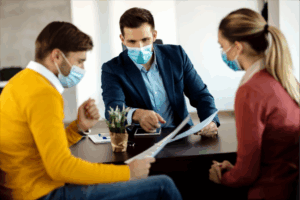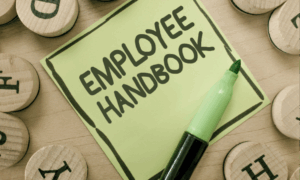As the coronavirus (COVID-19) pandemic continues to have an unprecedented effect on daily life, many business owners are looking forward to the future and a return to normalcy. However, even when stay-at-home orders are lifted and nonessential businesses are allowed to resume operations, there’s a lot for organizations to consider before they reopen their doors. What’s more, many of these considerations are workplace-specific and could be more involved depending on the industry you operate in.
To protect their customers and employees alike, it’s important for organizations to do their due diligence before opening their business back up to the public following the COVID-19 pandemic.
Determining When to Reopen
While many essential businesses (e.g., hospitals, pharmacies, grocery stores and gas stations) have remained open during the COVID-19 pandemic, other operations deemed nonessential have shut down temporarily or changed the nature of their operations. Not only has this led to significant business disruptions, but, for many, it has critically impacted their bottom line.
However, we may be nearing a time when stay-at-home regulations are scaled back and all businesses are allowed to resume as normal. The question then is: How will business owners know it is acceptable to reopen? The following are some best practices to keep in mind:
- Review guidance from state and local governments—The COVID-19 pandemic impacts states and regions in different ways. Just because a business is allowed to reopen in one region of the country doesn’t automatically mean your operations will be allowed to resume as well. As such, it’s critical to understand and review all relevant state and local orders to determine if and when your business is allowed to reopen.
- Understand the risks—If and when the government allows all businesses to reopen, that doesn’t necessarily mean COVID-19 is no longer a threat to your operations. What’s more, some businesses may have greater COVID-19 exposures than others, underscoring the importance of performing a thorough risk assessment before reopening. Prior to conducting a risk assessment, it’s important to review guidance from the Occupational Safety and Health Administration (OSHA), state and local agencies, industry associations as well as your local health department. More information on conducting a risk assessment can be found below.
Again, before reopening, it’s critical to seek the expertise of legal, insurance and other professionals.
Conducting a Risk Assessment
Even after the government allows businesses to reopen, firms still need to determine if it makes sense to resume operations. Safely restarting your business won’t be as simple as unlocking the front door.
Before reopening, businesses should perform a risk assessment to determine what steps must be taken. While the complexity of risk assessments will differ from business to business, they typically involve the following steps:
- Identifying the hazards—When it comes to COVID-19, businesses need to think critically about their exposures, particularly if an infected person entered their facilities. When identifying hazards, it’s a good idea to perform a walkthrough of the premises and consider high-risk areas (e.g., breakrooms and other areas where people may congregate). It’s also important to consider what tasks employees are performing and whether or not they are especially exposed to COVID-19 risks when performing their duties.
- Deciding who may be harmed and how—Once you’ve identified hazards to your business, you need to determine what populations of your workforce are exposed to COVID-19 risks. When performing this evaluation, you will need to make note of high-risk individuals (e.g., staff members who meet with customers or individuals with preexisting medical conditions).
- Assessing risks—Once you have identified the risks facing your business, you must analyze them to determine their potential consequences. For each risk facing your business, you’ll want to determine:
- How likely is this particular risk to occur?
- What are the ramifications should this risk occur?
When analyzing your risks, consider potential financial losses, compliance requirements, employee safety, business disruptions, reputational harm and other consequences.
- Controlling risks—With a sense of what the threats to your business are, you can then consider ways to address them. There are a variety of methods businesses can use to manage their risks, including:
- Risk avoidance—Risk avoidance is when a business eliminates certain hazards, activities and exposures from their operations altogether.
- Risk control—Risk control involves preventive action.
- Risk transfer—Risk transfer is when a business transfers their exposures to a third party.
For COVID-19, control measures could include cleaning protocols, work from home orders and mandated personal protective equipment (PPE) usage. Additional workplace considerations can be found below.
- Monitoring the results—Risk management is an evolving, continuous process. Once you’ve implemented a risk management solution, you’ll want to monitor its effectiveness and reassess. Remember, COVID-19 risks facing your business can change over time.
Maintaining Workplace Safety Using OSHA and CDC Guidance
Once you conduct a risk assessment, you will need to act to control COVID-19 risks. Again, risks and the corrective steps that organizations take to address those risks will vary by business and industry.
Thankfully, there are a number of OSHA and Center for Disease Control and Prevention (CDC) workplace controls to consider if your risk assessment determines that COVID-19 poses a threat to your employees or customers. For instance, you should:
- Implement administrative controls—Typically, administrative controls are changes in work policies or procedures that reduce or minimize an individual’s exposure to a hazard. An example of an administrative control for COVID-19 is establishing alternating days or extra shifts that reduce the total number of employees in a facility at a given time.
- Utilize Personal Protective Equipment (PPE)— PPE is equipment worn by individuals to reduce exposure to a hazard, in this case, CVOID-19. Businesses should focus on training workers on and proper PPE best practices. Employees should understand how to properly put on, take off and care for PPE. Training material should be easy to understand and must be available in the appropriate language and literacy level for all workers.
- Consider engineering controls—Engineering controls protect workers by removing hazardous conditions or by placing a barrier between the worker and the hazard. For COVID-19, engineering controls can include:
- Installing high-efficiency air filters
- Increasing ventilation rates in the work environment
- Installing physical barriers, such as clear plastic sneeze guards
- Be adaptable—You should be prepared to change your business practices if needed to maintain critical operations. This could involve identifying alternative suppliers, prioritizing existing customers or suspending portions of your operations.
- Create a dialogue with vendors and partners—Talk with business partners about your response plans. Share best practices with other businesses in your communities, and especially those in your supply chain.
- Encourage social distancing—Social distancing is the practice of deliberately increasing the physical space between people to avoid spreading illness. In terms of COVID-19, social distancing best practices for businesses can include:
- Avoiding gatherings of 10 or more people
- Instructing workers to maintain at least 6 feet of distance from other people
- Hosting meetings virtually when possible
- Limiting the number of people on the jobs site to essential personnel only
- Encouraging or requiring staff to work from home when possible
- Discouraging people from shaking hands
- Manage the different risk levels of their employees—It’s important to be aware that some employees may be at higher risk for serious illness, such as older adults and those with chronic medical conditions. Consider minimizing face-to-face contact between these employees or assign work tasks that allow them to maintain a distance of 6 feet from other workers, customers and visitors.
- Separate sick employees—Employees who appear to have symptoms (i.e., fever, cough or shortness of breath) upon arrival at work or who become sick during the day should immediately be separated from other employees, customers and visitors, and sent home. If an employee is confirmed to have COVID-19, employers should inform fellow employees of their possible exposure to COVID-19. The employer should instruct fellow employees about how to proceed based on the CDC Public Health Recommendations for Community-Related Exposure.
- Support respiratory etiquette and hand hygiene—Businesses should encourage good hygiene to prevent the spread of COVD-19. This can involve:
- Providing tissues and no-touch disposal receptacles
- Providing soap and water in the workplace
- Placing hand sanitizers in multiple locations to encourage hand hygiene
- Perform routine environmental cleaning and disinfection—Businesses should regularly sanitize their facility to prevent the spread of COVID-19. Some best practices include:
- Cleaning and disinfecting all frequently touched surfaces in the workplace, such as workstations, keyboards, telephones, handrails and doorknobs.
- Discouraging workers from using other workers’ phones, desks, offices, or other tools and equipment, when possible. If necessary, clean and disinfect them before and after use.
- Providing disposable wipes so that commonly used surfaces can be wiped down by employees before each use.
Continued Safety
While resuming operations following the COVID-19 pandemic may seem like a daunting task, businesses don’t have to go it alone. To help with this process, organizations can seek the help of their insurance professionals to determine what actions they need to take to ensure their business reopens smoothly. To learn more, contact Pinkerton Insurance Group today.






